
Gondola Il ferro di prua. Venezia (Fisheye Vision) Venezia, Visions
Affixed to the prow is a six-pronged steel object known as a ferro, which contributes mightily to the iconic profile of the boats. Nobody really knows what it's for or what it represents, although one hypothesis maintains that the six teeth represent the six districts of Venice.
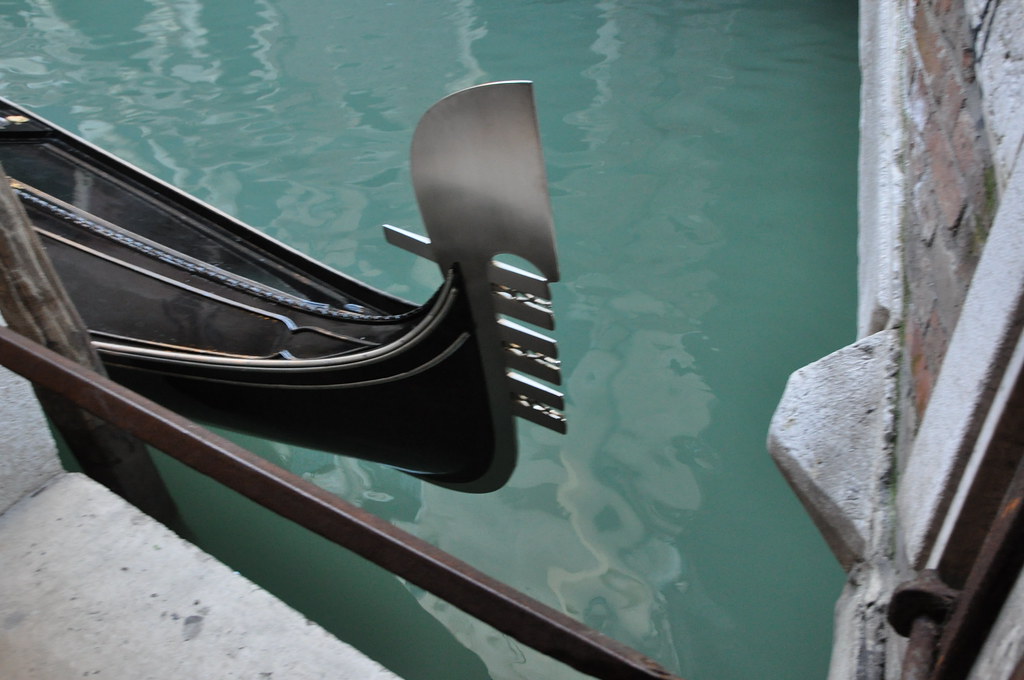
Gondola ferro di prua Il t… Flickr
Home Blog Venetian gondola: the meaning of its iron prow Submitted by webmaster on 10/14/2016 - 12:49. When you look at a Venetian gondola, it is impossible not to notice the metal blade which is on the prow of the boat. Have you ever asked yourself why it is there? Is it functional or just a decoration? Does it have a symbolic meaning?
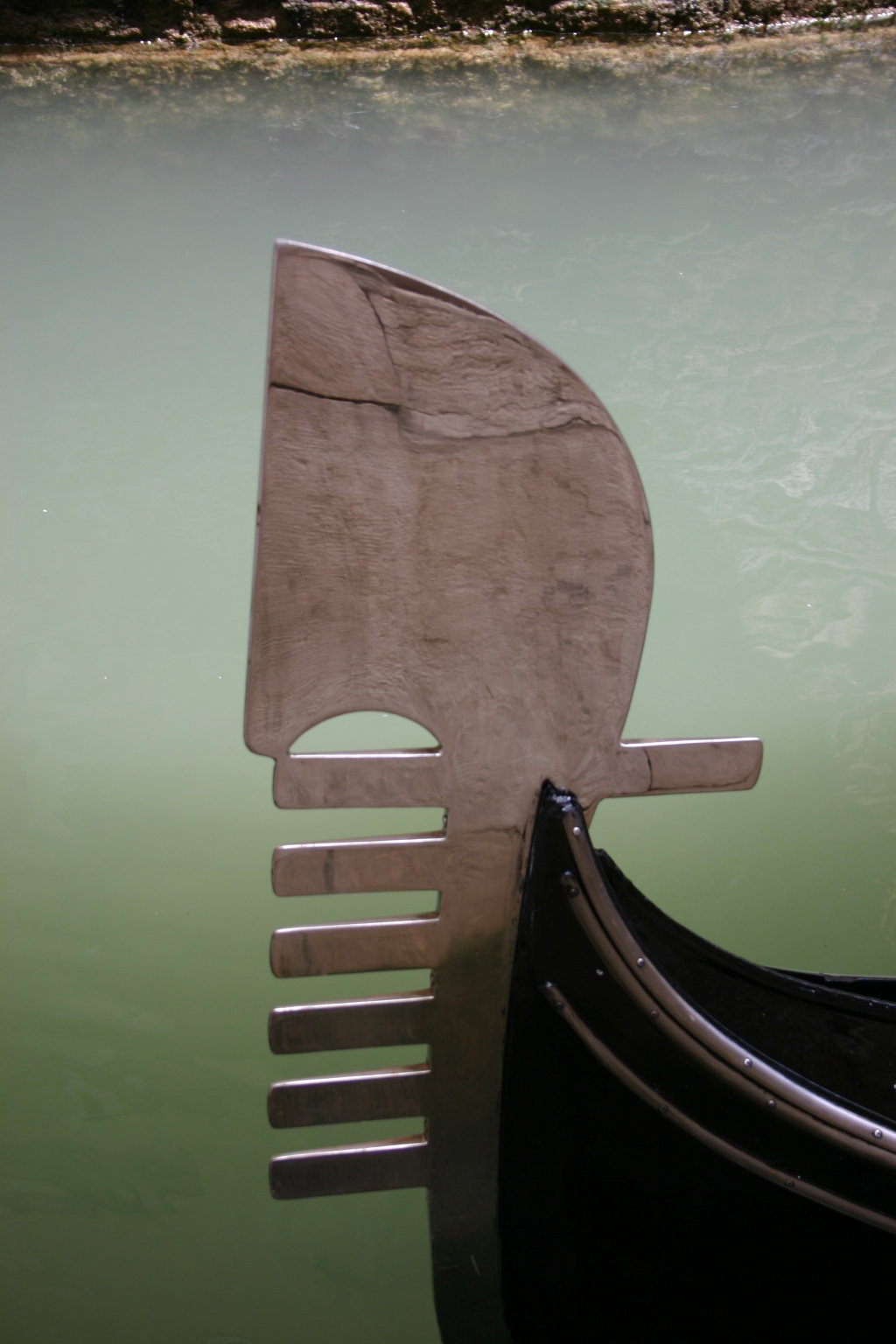
VeniceGondola cercodiamanti
The gondola dates back to the 11th century, and at the height of Venice's wealth and power in the 16th-century, more than 10,000 gondolas crowded the waters of Venice. Some were used as simple shuttles transporting Venetians and goods through the city via water, owned by teams of four who rowed and managed the gondola, and some were elegant.

Gondola Ferro stock photo. Image of iron, dock, front 2663010
The Gondola. The Gondolas originated from Italy in a town called Venice. Venice is situated at the edge of the Adriatic Sea, which is why most of its streets are waterways. This is the reason why gondolas are the most used means of transport. Compared to other watercraft in Venice, the Gondola boats are the most popular.
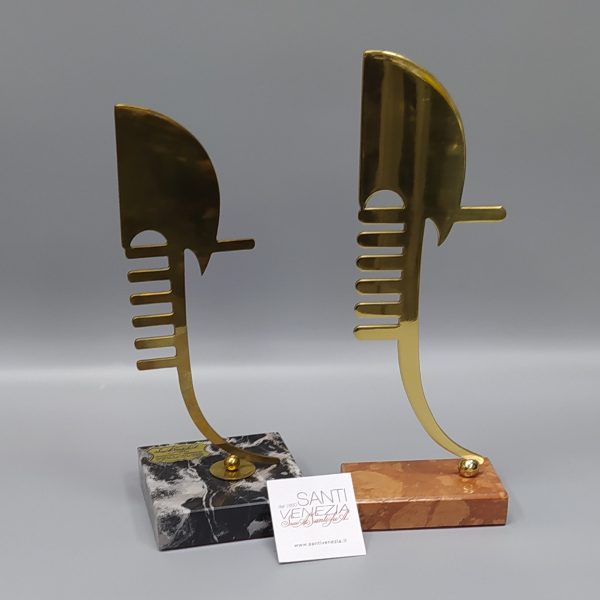
Trofeo Ferro Gondola Venezia Santi Venezia
Il Ferro di prua della gondola, conosciuto anche come pettine, ha numerose e affabili decorazioni che impreziosiscono la splendida ed elegante imbarcazione della laguna di Venezia.. Il caratteristico colore nero le viene da un'ordinanza del Magistrato alle Pompe che mirava a ridimensionare lo sfarzo con cui nobili e ricchi decoravano le.
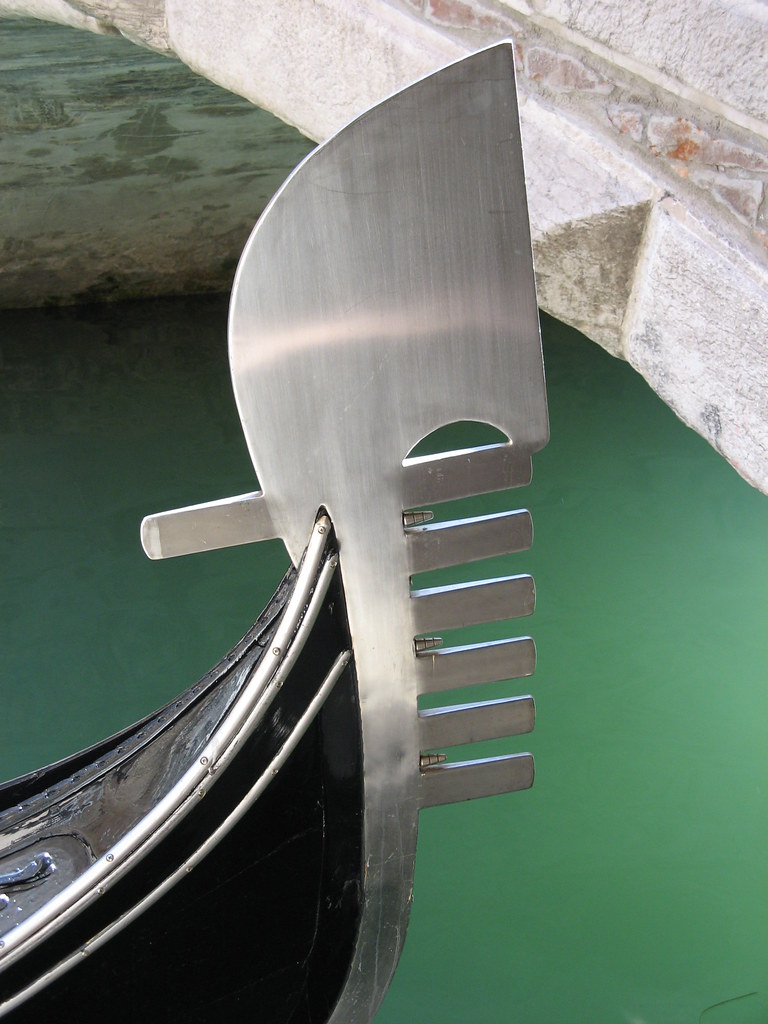
Ferro di prua Antonio Flickr
Gondola, Oars and forcole. There are about 280 parts that make up a gondola, a symbolic boat of Venice up to 11 meters long. Each piece has its own function: structural (such as the fir, larch and oak hull assembled by the "squerariòl"), functional (such as the walnut oars made by the "remèr") or ornamental-decorative (such as the.
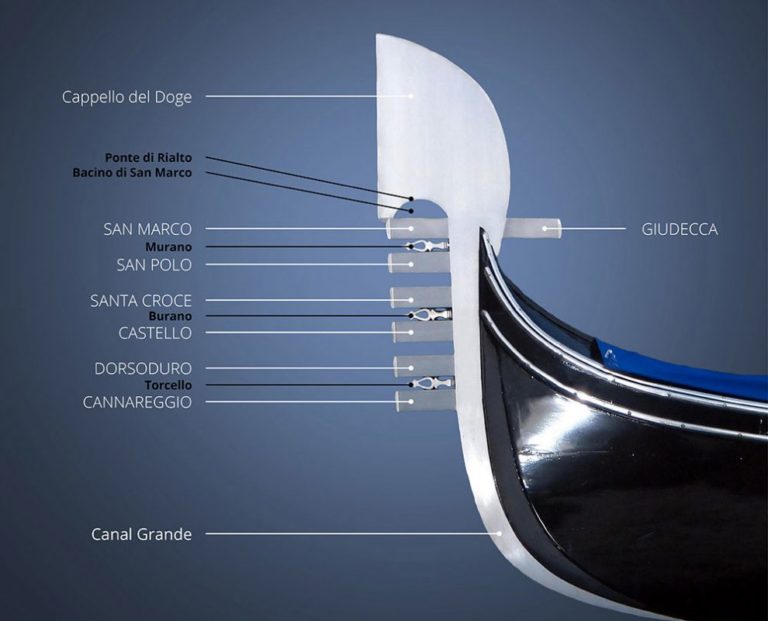
The Gondola Venice colors and the typical black mean of tansport
Acting as a counterweight to the gondolier is the ferro, a metal piece that sits at the boat's bow. It also dually helps keep the gondola level above water. The only adornment is the risso, a seahorse-shaped ornament that is placed on the stern. The final aspect of a gondola is the forcola or the oarlock, which is attached to the stern. Made.

A brass "fèrro" on the front (bow) of a Gondola in Venice, Italy
The gondola ( English: / ˈɡɒndələ /, Italian: [ˈɡondola]; Venetian: góndoła [ˈɡoŋdoɰa]) is a traditional, flat-bottomed Venetian rowing boat, well suited to the conditions of the Venetian lagoon.
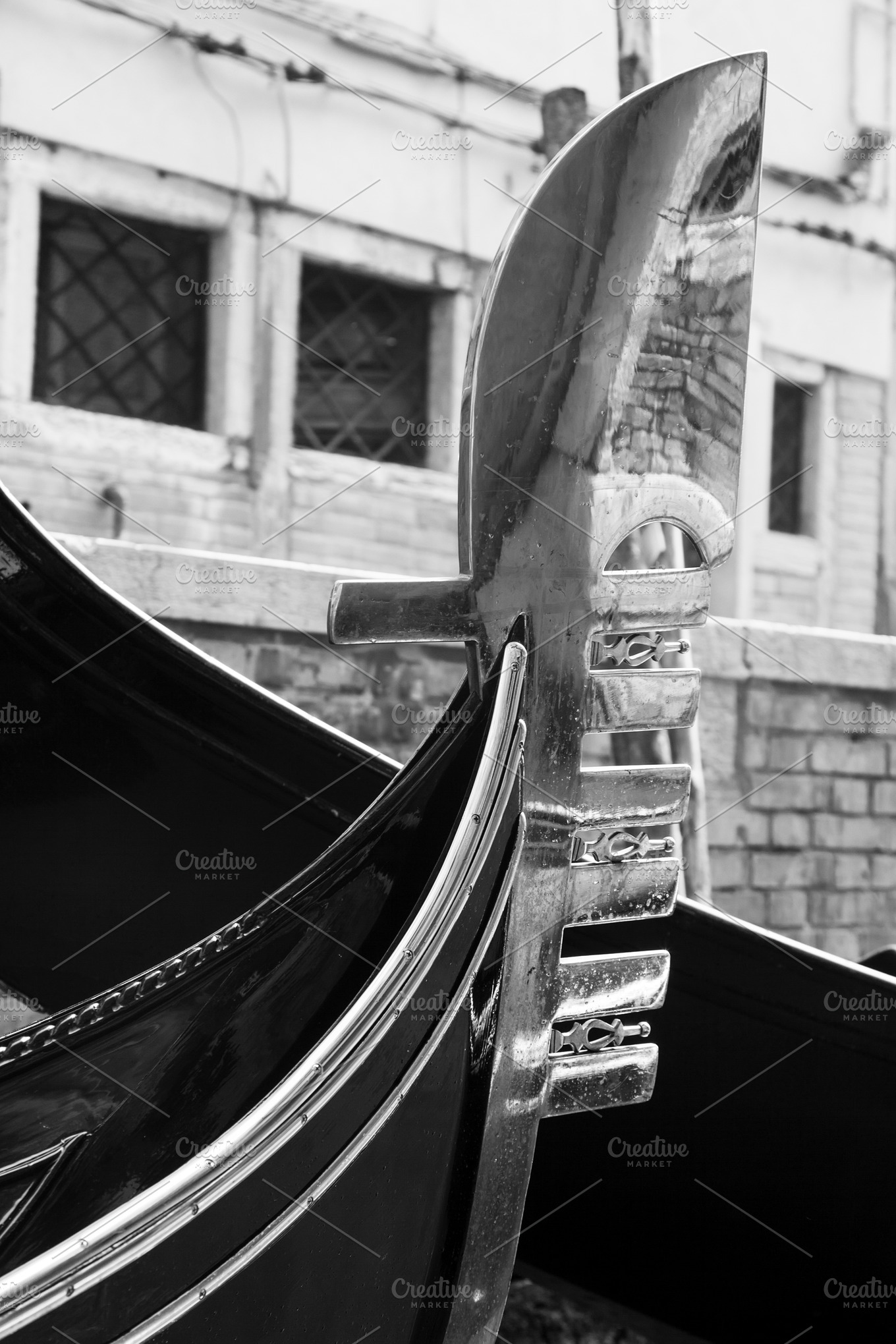
CloseUp Of Gondola Ferro. Venice, Italy. Arts & Entertainment Photos
Truly. There are a few symbols that "define' Venice all around the world: San Marco's square, the Rialto Bridge, and the Gondolas. While it is possible to find books and guides speaking in detail about the architecture in Venice, the descriptions about design and characteristics of a Gondola often fall short.

ferro da gondola, elemento d'insieme manifattura veneziana (sec
Ferro della gondola The iron prow-head of the gondola Curiosities about the Venetian boat The gondola is the oldest and best known Venetian boat in the world. The name derives from the Latin "cuncula" or shell and is 11 m long and 350 kg heavy, but easily maneuvered with a single oar by the gondolier.
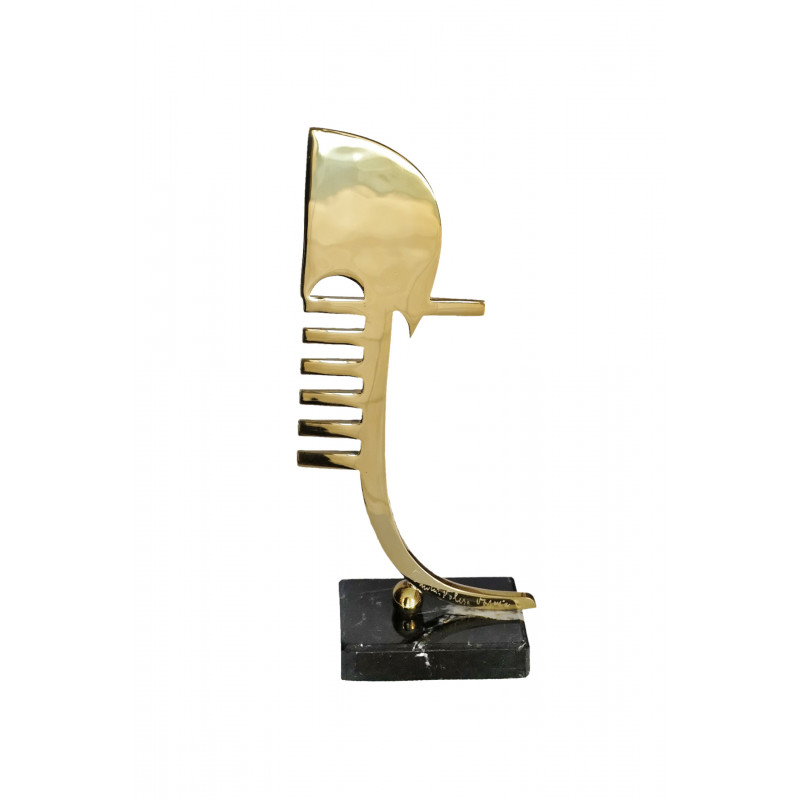
Ferro gondola di prora
Here's everything you need to know! Proceed to our article on the Venetian gondola below, to become a true expert on the matter. Or use the Interactive Index if you're looking for something specific. Interactive Index General information about the Gondola in Venice: What is a gondola? Similarities between the gondola and other Venetian boats
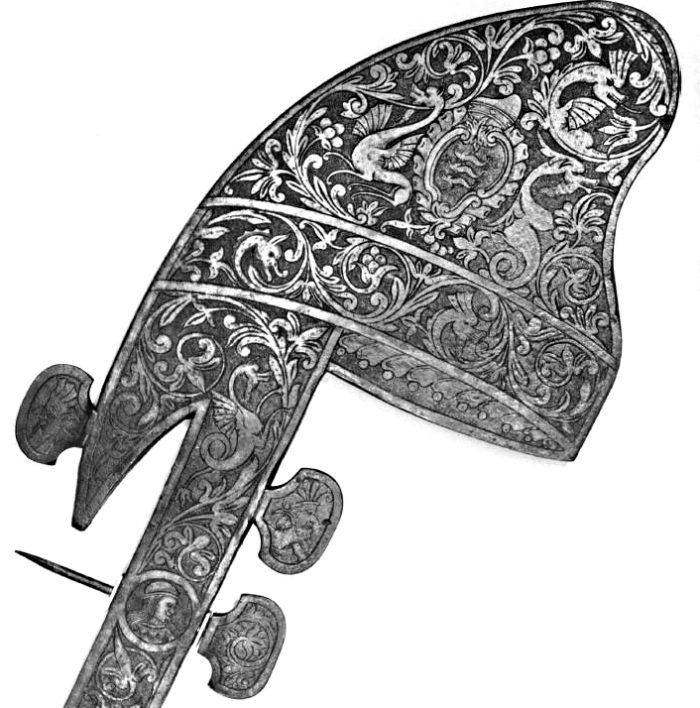
Il ferro della gondola Com'è nato e a cosa serviva? itVenezia
Italian In the rich Republic of Venice of the 16 th century, boats of all kinds glided along the canals: batelas, caorlinas, galleys, gondolas… Gondolas, for centuries the main means of transport and today the iconic symbol of Venice, looked different from how they do today.

Curiosità Il fero da próva della gondola Cincotto Arte Venezia
The oldest gondola in Venice is this little gondola da fresco (roughly translated as "gondola of the cool air").. Once made of "mild steel," the ferro could weigh up to 50 pounds. Now that gondolas are lighter, the ferro is also lighter. Like everything in these boats, the ferro is custom-made. photo by Erla Zwingle THE GONDOLA'S.

pensare divino IL SIGNIFICATO DEL FERRO DI PRUA DI UNA GONDOLA, LO
L'elemento che caratterizza in modo univoco la gondola è il ferro da prua, detto anche pettine o Dolfin. La gondola dell'ambasciatore Giovanni Battista Colloreado in arrivo a Venezia. Di Giovanni Antonio Faldoni e Luca Carlevaris. Anno 1720-30. Metropolitan Museum of Art of New York. Il Pettine

Ferro della Gondola cosa serve e curiosità sul ferro di prua
Da allora il ferro acquistò la linea generale che oggidì osserviamo, ad eccezione del ferro artistico che ornava la gondola, nel 1682 dell'ambasciatore Cesareo, " tutto di acciaio a naturale rilievo " e di " eccellentissimo lavoro ". Conforme una notizia, citata dall' Orlandini, nel 1631 il ferro, simile al moderno, aveva cinque.

De qua e de la IL FERRO DA GONDOLA
The Silver Line will operate during the same hours as the rest of the Metrorail system: Monday through Thursday from 5 a.m. to midnight. Friday from 5 a.m. to 1 a.m. Saturday from 7 a.m. to 1 a.m. Sunday from 7 a.m. to midnight. Here's a quick reference guide for each new station on the Silver Line Extension. Photo courtesy Metro.